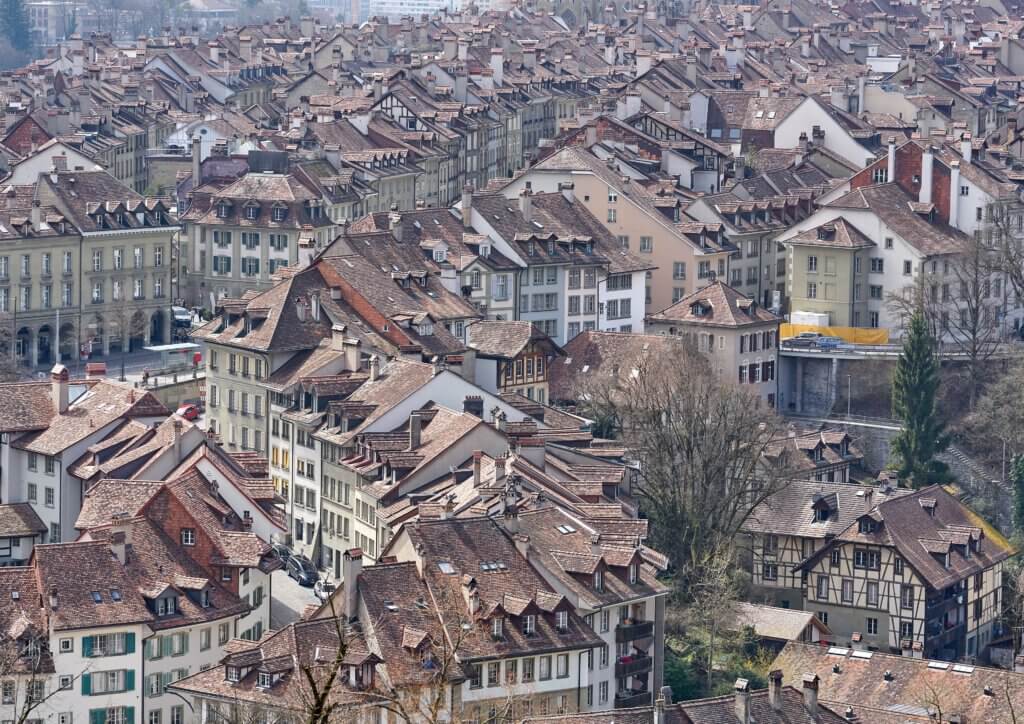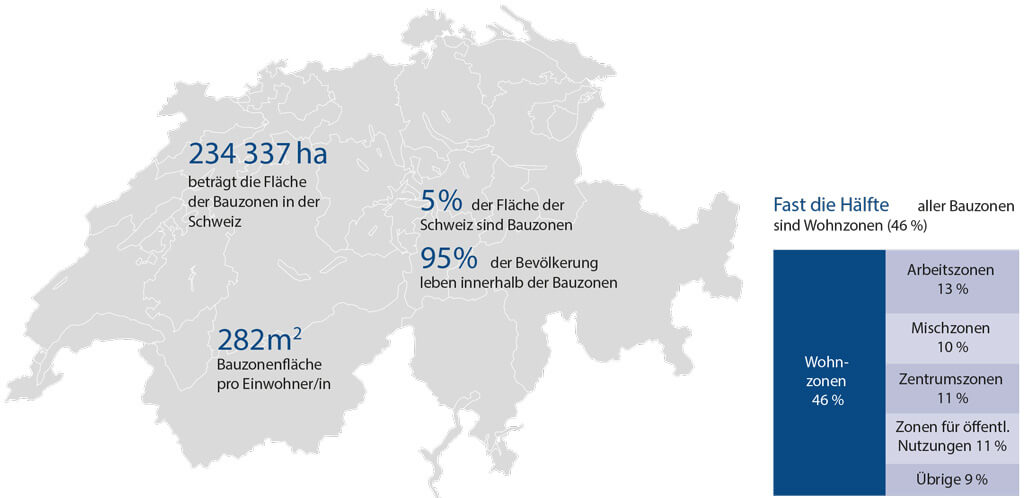
Only 5 percent of Switzerland’s land is for building zones, and 95 percent of the population is concentrated there. With more and more residents, there is only one solution for the future.
The building zone area in Switzerland has remained almost stable over the past five years. And this is a continuation of a trend.
Already in the five years up to 2017, the building area had grown only slightly, the Federal Office of Housing ARE announced on Thursday on the building zone statistics.
Accordingly, the building zone area of Switzerland increased between 2017 and 2022 by only one percent to about 234,000 hectares.
One million more
Because the population has increased at the same time, people in Switzerland live and work on less land per person than five years ago. Since 2012, the number of residents in building zones has grown from 7.4 to 8.3 million.
This means that significantly more people are living in a practically constant area, which illustrates the “density stress.”
On average, one inhabitant currently requires 282 m2 of building zone space. Five years ago it was 291 m2 and ten years ago 309 m2, the full report shows.
Living and working
Thus, about 95 percent live within 5 percent of the total area of Switzerland. Around half of all building zones are used for living and around 13 percent for working.

The building zone statistics provide information on the conditions for living and working in Switzerland. (Source: media service)
The fact that hardly any new building zones have been created is largely due to the cantons’ spatial planning. It stipulates that ‘municipalities must develop their settlements inward’ and build more densely.
This has been stipulated by the Spatial Planning Act (RPG) since May 2014. The problem with spatial planning is getting bigger and bigger, as muula.ch has already reported.
Up and out
The solution for the future is simple. It must go on the existing areas increasing both in width and in height.
According to the ARE, new buildings are therefore already being built larger or higher in order to make greater use of the building zones. This applies to both already built-up and newly built-up construction zones, it said.
Once again Bern
In the past 10 years, a total of around 6,000 hectares of vacant land have been built over within the building zones. This is slightly more than the entire area of the city of Bern, it said. However, there are still considerable building land reserves, the ARE added.
Just under half of the currently-undeveloped building zones are in urban areas, a little more than a quarter in communities close to a city, the other quarter sit in rural communities. According to the report, there is still air.
11/24/2022/kut./ena.



